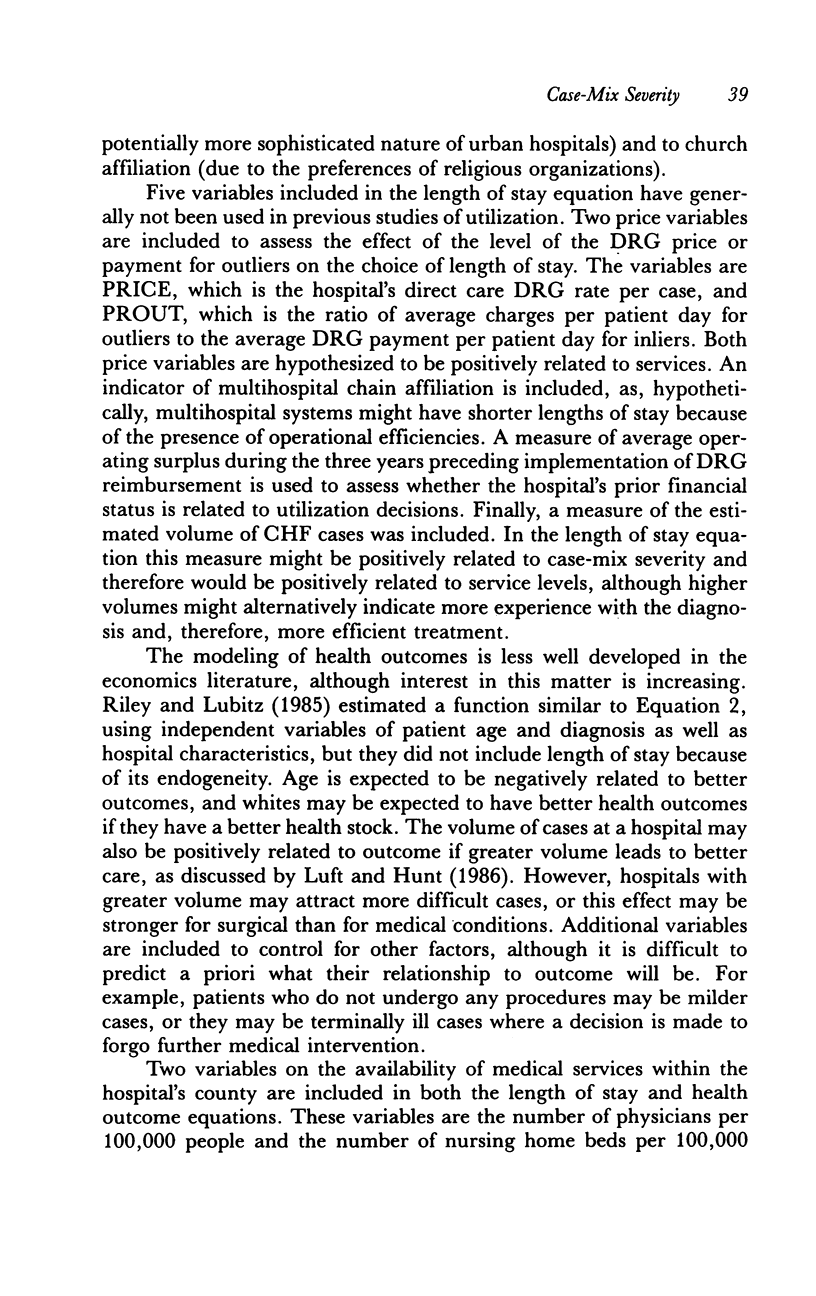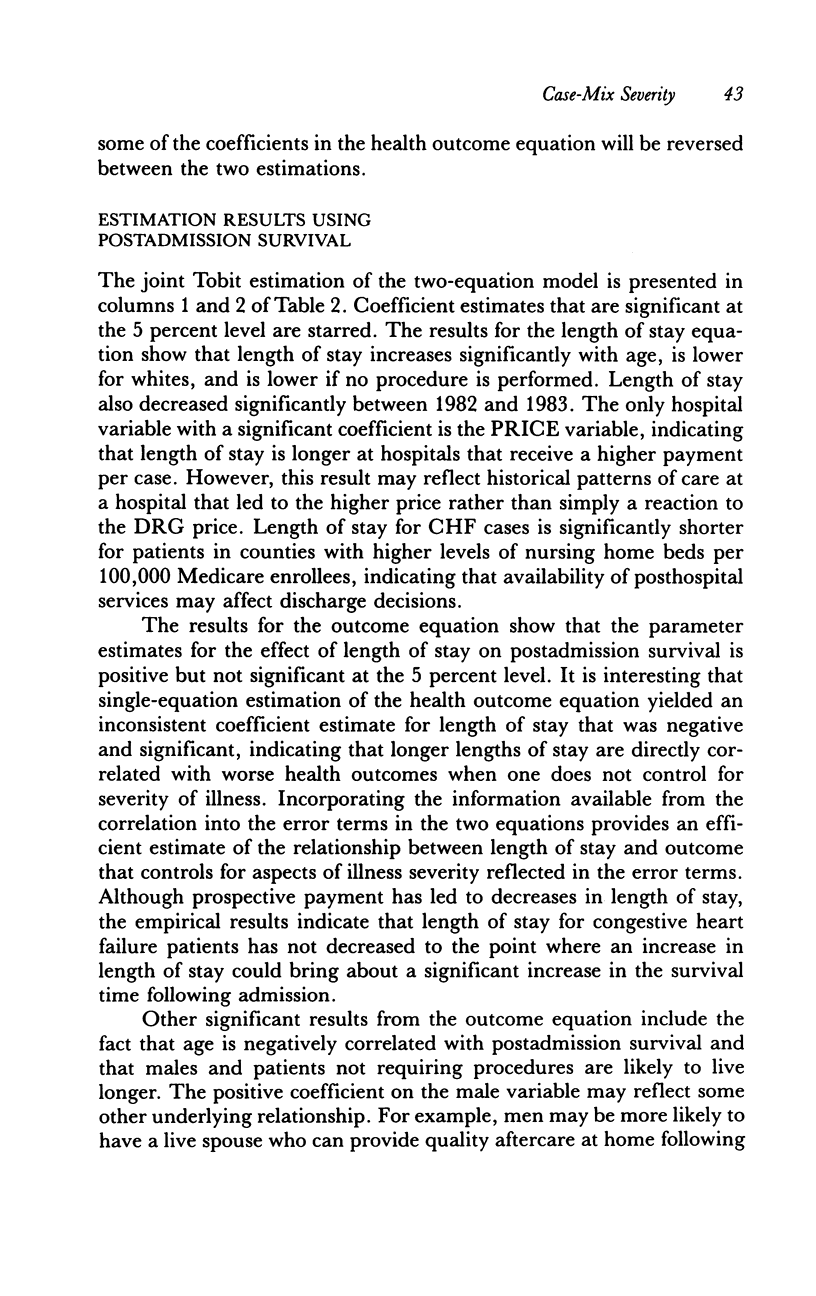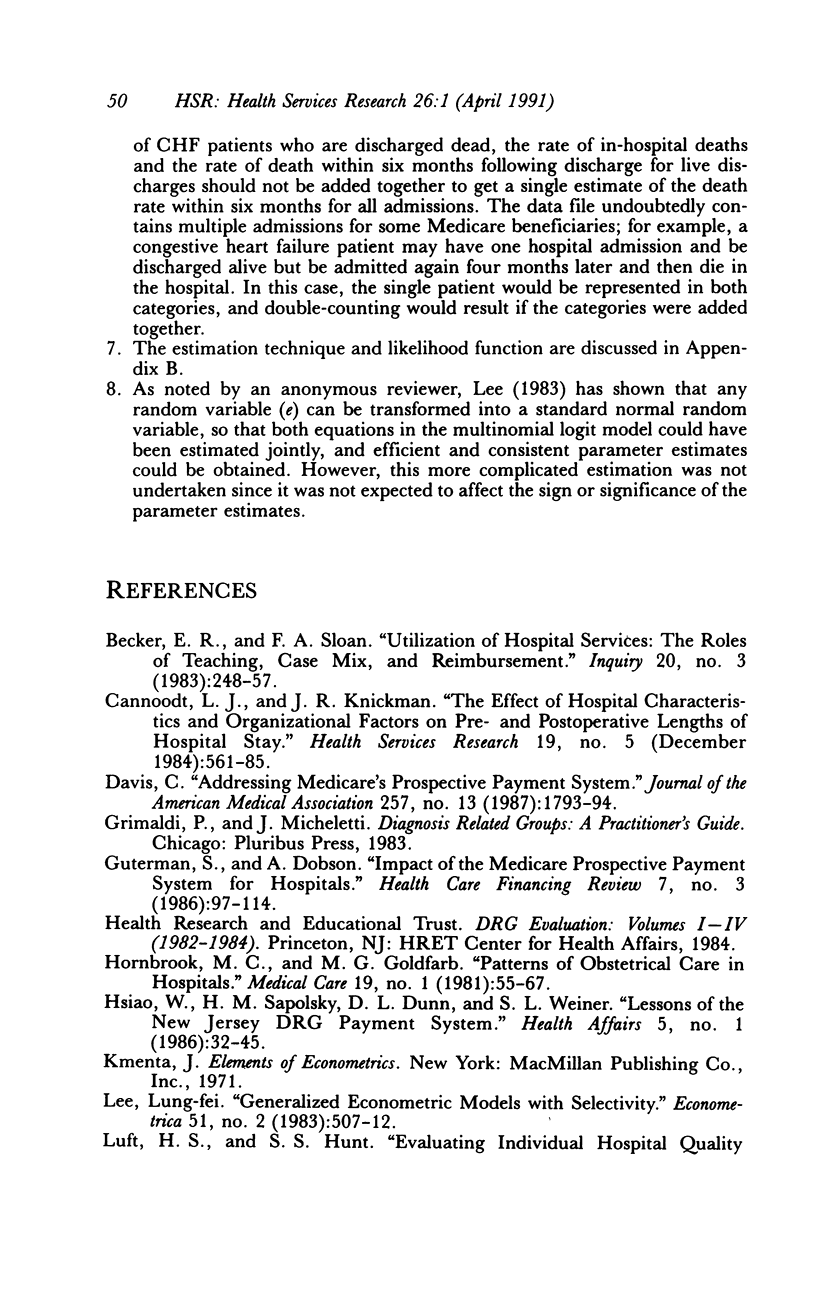Abstract
Although implementation of the Medicare prospective payment system has been accompanied by significant decreases in hospital length of stay, the early discharge of some patients may lead to worse health outcomes, particularly if sufficient aftercare services following hospitalization are not available. This article develops an empirical model of the relationship between the choice of length of stay and patient outcome. The model incorporates information on the severity of a patient's medical condition known by the physician who chooses length of stay for a patient but generally not known by a researcher interested in the factors that affect length of stay and health outcome. Joint estimation of equations for length of stay and health outcome controls for unmeasured aspects of case severity that affect both variables. The ratio of nursing home beds to Medicare enrollees in the county is included as an exogenous variable in both equations to assess whether variation in nursing home bed availability is correlated with length of stay or health outcome. The model is estimated using billing data for Medicare patients admitted with congestive heart failure to New Jersey hospitals during 1982 and 1983. Two measures of outcome are used: (1) a discrete measure of survival time following admission, and (2) a categorical measure of whether or not the patient was discharged dead or died within six months after discharge. Empirical results show no evidence that longer lengths of stay for congestive heart failure patients lead to lower postadmission mortality. However, greater availability of nursing home beds may reduce length of stay and may shift the provision of terminal care away from a hospital setting. Therefore, policies to expand the nursing home bed supply may enable further decreases in hospital length of stay without deleterious effect on patient outcome.
Full text
PDF
























Selected References
These references are in PubMed. This may not be the complete list of references from this article.
- Becker E. R., Sloan F. A. Utilization of hospital services: the roles of teaching, case mix, and reimbursement. Inquiry. 1983 Fall;20(3):248–257. [PubMed] [Google Scholar]
- Cannoodt L. J., Knickman J. R. The effect of hospital characteristics and organizational factors on pre- and postoperative lengths of hospital stay. Health Serv Res. 1984 Dec;19(5):561–585. [PMC free article] [PubMed] [Google Scholar]
- Davis C. Assessing Medicare's prospective payment system. JAMA. 1987 Apr 3;257(13):1793–1794. [PubMed] [Google Scholar]
- Guterman S., Dobson A. Impact of the Medicare prospective payment system for hospitals. Health Care Financ Rev. 1986 Spring;7(3):97–114. [PMC free article] [PubMed] [Google Scholar]
- Hornbrook M. C., Goldfarb M. G. Patterns of obstetrical care in hospitals. Med Care. 1981 Jan;19(1):55–67. doi: 10.1097/00005650-198101000-00007. [DOI] [PubMed] [Google Scholar]
- Hsiao W. C., Sapolsky H. M., Dunn D. L., Weiner S. L. Lessons of the New Jersey DRG payment system. Health Aff (Millwood) 1986 Summer;5(2):32–45. doi: 10.1377/hlthaff.5.2.32. [DOI] [PubMed] [Google Scholar]
- Luft H. S., Hunt S. S. Evaluating individual hospital quality through outcome statistics. JAMA. 1986 May 23;255(20):2780–2784. [PubMed] [Google Scholar]
- Rich M. W., Freedland K. E. Effect of DRGs on three-month readmission rate of geriatric patients with congestive heart failure. Am J Public Health. 1988 Jun;78(6):680–682. doi: 10.2105/ajph.78.6.680. [DOI] [PMC free article] [PubMed] [Google Scholar]
- Riley G., Lubitz J. Outcomes of surgery among the Medicare aged: surgical volume and mortality. Health Care Financ Rev. 1985 Fall;7(1):37–47. [PMC free article] [PubMed] [Google Scholar]
- Rosko M. D., Broyles R. W. Short-term responses of hospitals to the DRG prospective pricing mechanism in New Jersey. Med Care. 1987 Feb;25(2):88–99. doi: 10.1097/00005650-198702000-00002. [DOI] [PubMed] [Google Scholar]
- Sager M. A., Leventhal E. A., Easterling D. V. The impact of Medicare's prospective payment system on Wisconsin nursing homes. JAMA. 1987 Apr 3;257(13):1762–1766. [PubMed] [Google Scholar]
- Swan J. H., Harrington C. Estimating undersupply of nursing home beds in states. Health Serv Res. 1986 Apr;21(1):57–83. [PMC free article] [PubMed] [Google Scholar]


